IAH 207
1/27
There's no tags or description
Looks like no tags are added yet.
Name | Mastery | Learn | Test | Matching | Spaced |
|---|
No study sessions yet.
28 Terms
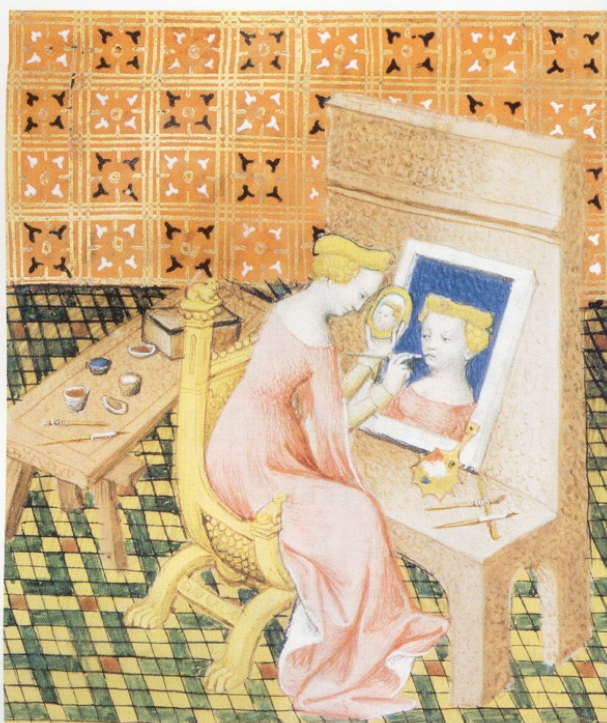
Marcia Painting Her Self Portrait (1402)
1. Very early book focused on the biographies of women. The illustration is of Marcia, a well-known Roman artist
2. Also focused on the artist at work with a mirror prominently placed.
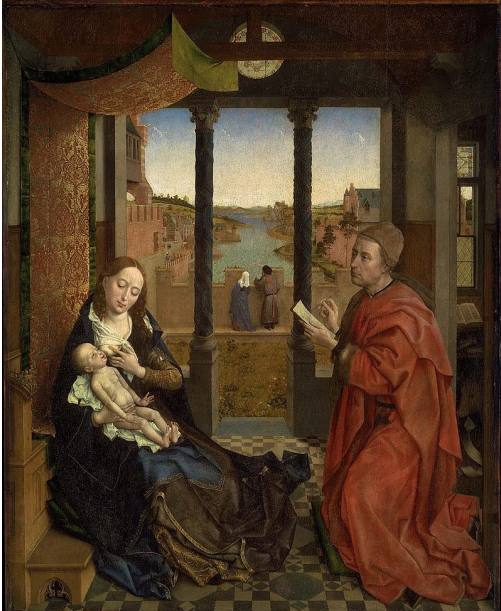
Rogier van der Weyden, St. Luke Drawing the Virgin and Child, c. 1435
1. Foregrounds artist’s skill
2. Connects art and artist to the divine
3. Connects everyday world to the divine
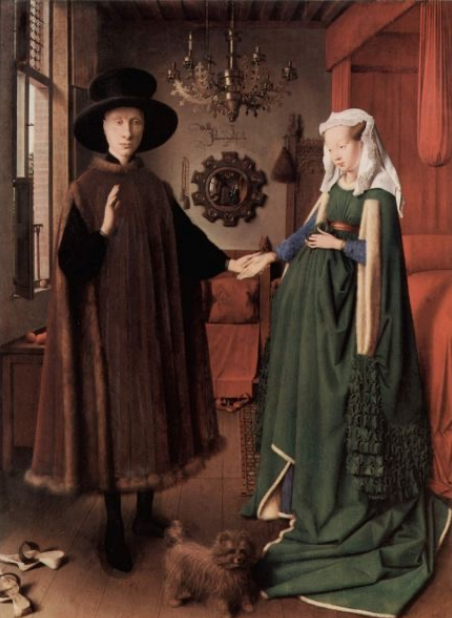
The Arnolfini Portrait, Jan van Eyck (1434)
1. Miniature self portrait “hidden”
2. Large signature suggests van Eyck’s status as well as his role as witness
3. Convex mirror important detail
4. “Fido”, one of a number of allegorical images
5. Sense of humor in mixing religious and secular ideas
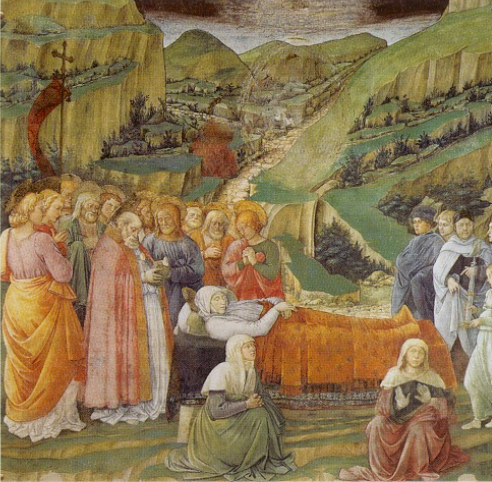
Lippi, Filippo. Dormition and Assumption of the Virgin (1466-1469)
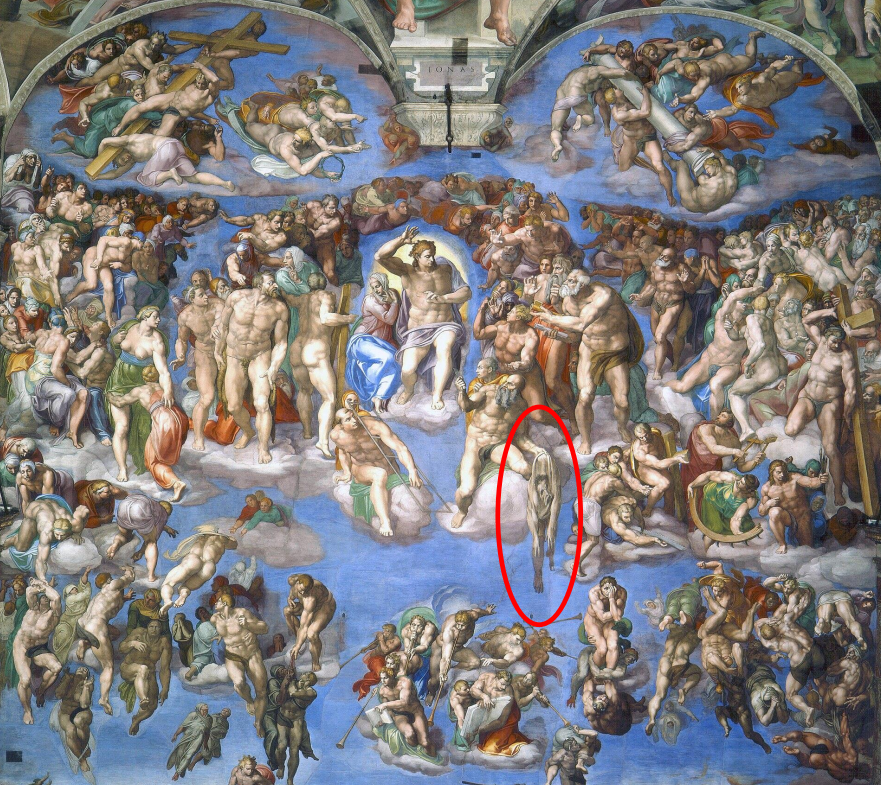
The Last Judgement (detail), 1536-41 Michaelango
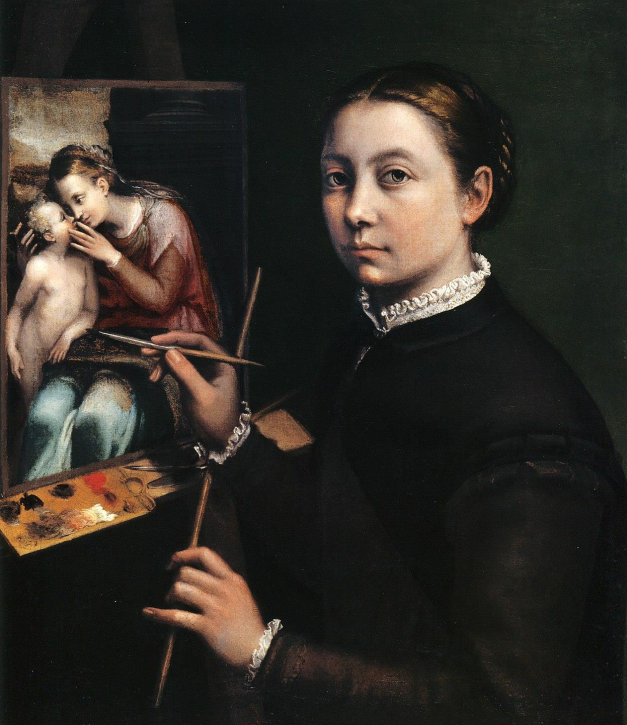
Self Portrait at the Easel Painting a Devotional Panel, 1556 Sofonissba
1. Whereas male artists during the renaissance wanted to appear as ”noble”, Anguissola embraces being the artist at work.
2. Ironically, this postion as working artist allows her to assume the role of St. Luke, painting the Virgin Mary, mother of Jesus of Nazareth. It also allows Anguissola to accentuate her own chastity, which was central to her business persona. Shows she is capable of painting religious scenes, which were considered a man’s work by many.
3. Tools of the trade accentuated, including the “maulstick” (paint stick) to allow for a study hand. Strong focus on gaze, skin, and hands
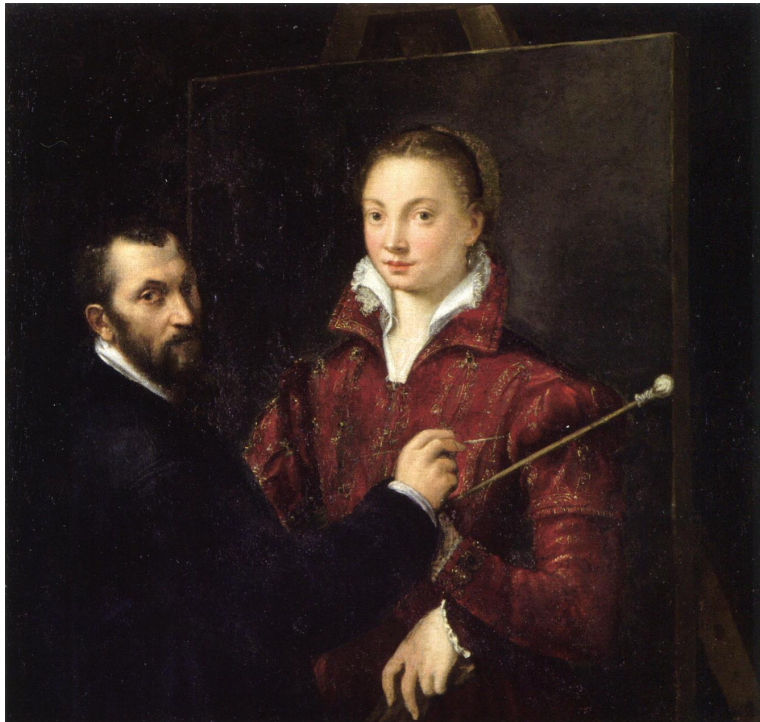
Sofonisba Anguissola, Self Portrait as a Portrait Created by Bernadino Campi, 1559
Sofonisba Anguissola Key Points 1. Worked extensively and inventively in self portraiture genre – most self portraits between Dürer and Rembrandt 2. Innovative new motifs
3. Playful subversion of gender roles and expectations
4. Sustained development of “artist at work” idea
5. Use of self portrait for career advancement and promotional purposes
6. Exploration of self in old age before Rembrandt
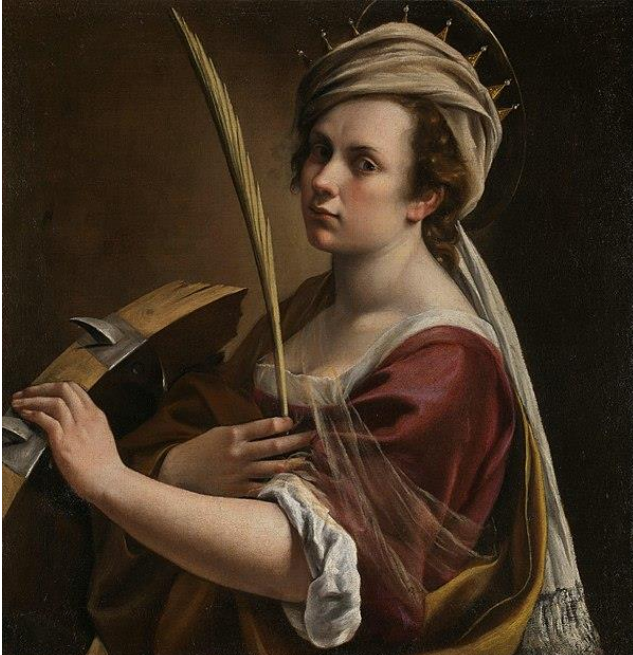
Artemisia Gentileschi, Self Portrait as St. Catherine of Alexandria, c. 1616
1. Allegorical Self Portraiture: Takes advantage of use of Women as Icons to deliver messages about gender (self=symbol)
2. Role-Playing / Self Othering
3. Expressive Brushwork
4. Dynamic Compositions with strong lighting and dramatic chiaroscuro
5. Baroque focus on theatricality and drama
6. Strong female identities and roles
7. Use of autobiographical self-portraiture
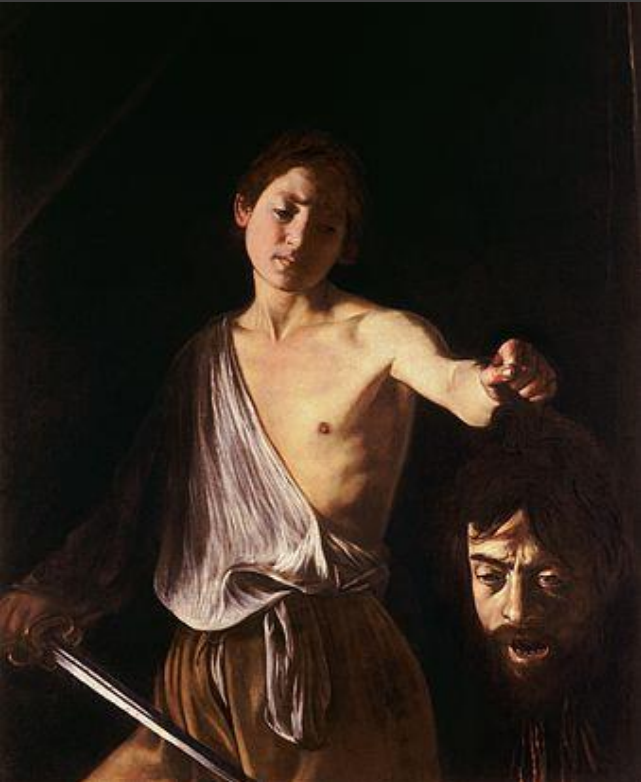
Caravaggio, David with the Head of Goliath (Head of Goliath is Caravaggio’s Self Portrait), c 1610
1. Representation of the self as victim (seen later in Gentileschi)
2. Interest in moments of drama and violence (which have an autobiographical subtext, as in Gentileschi)
3. Loose and spontaneous use of paint
4. Interest in role playing
5. Use of self-portraiture to seek forgiveness
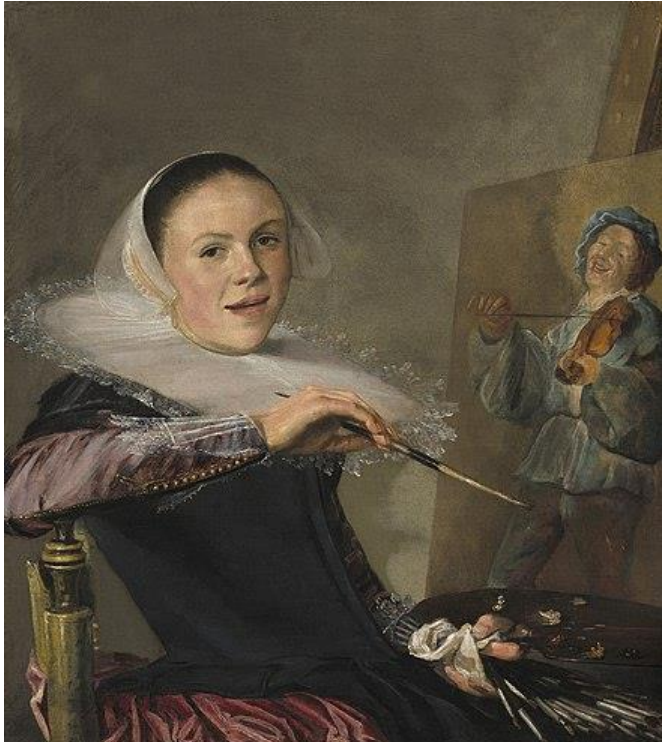
Judith Leyster, Self Portrait 1630
1.) Confident and relaxed woman at work— direct ¾ gaze and open smile violates previous rules of decorum
2.) Expressive and visible brush marks
3.) Deliberate self fashioning
4.) Self portrait as promotional
5.) Self conscious logo signature, that is perhaps gender neutral or allows her a more masculine approach to announcing her work
6.) Use of character from Commedia dell’Arte tradition suggests worldliness and willingness to be spontaneous and improvisational, as are the characters in these popular Italian-style comedies at this time.
7.) Strong sense of humor that fruthers her penchant for expanding what is possible by a woman: painting a comedy, collar imitates the pallet, paintbrush points to the crotch of her painted subject.
8.) Her work was thought to be by Hals until recently. Retrieved by feminist art critics
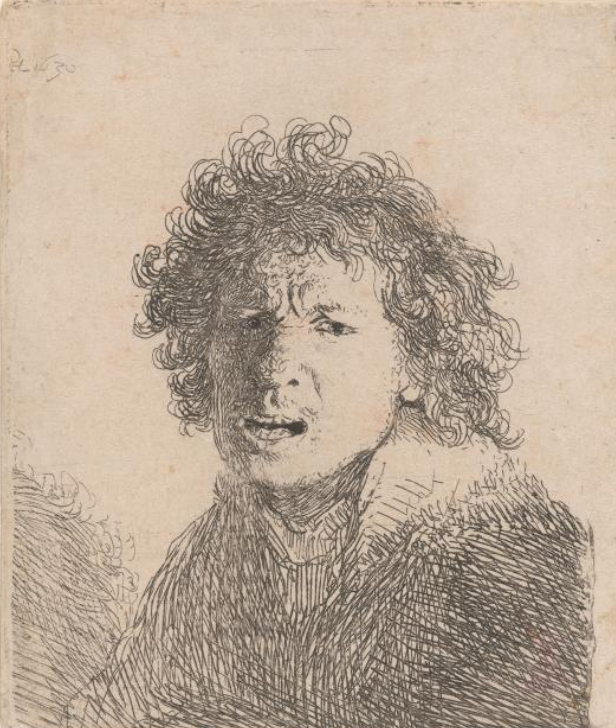
Rembrandt van Rijn
Self-portrait 1630
Rembrandt spent a good deal of time in front of a mirror during this period creating his own set of “tronie-ish” self-portraits. Many of these etchings still circulate today on the art market.
1. Wild hair and lines on his still young face
2. Gaze is powerful
3. What is he saying or shouting?
4. Rembrandt excellent and fast with etching needle 5. Extremes of light and dark
6. Artist as ”outsider, brooding character, a creative mind” wanting to be heard
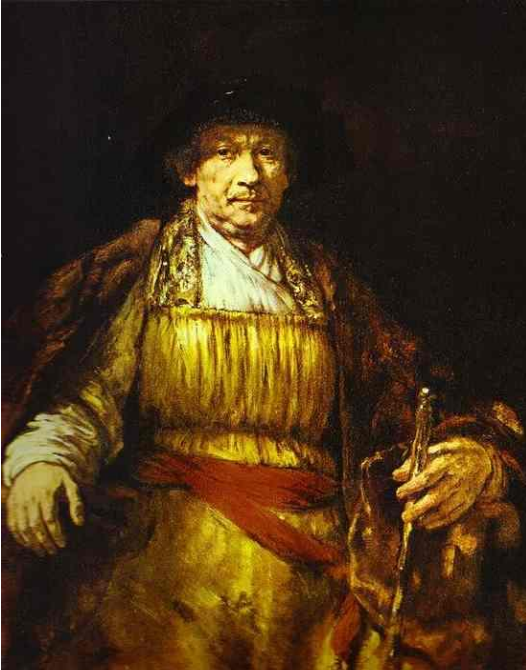
Short and aging, critics have suggested that Rembrandt was compensating in a fun way. Customers asking for portraits frequently wanted a similar treatment, so this is good training
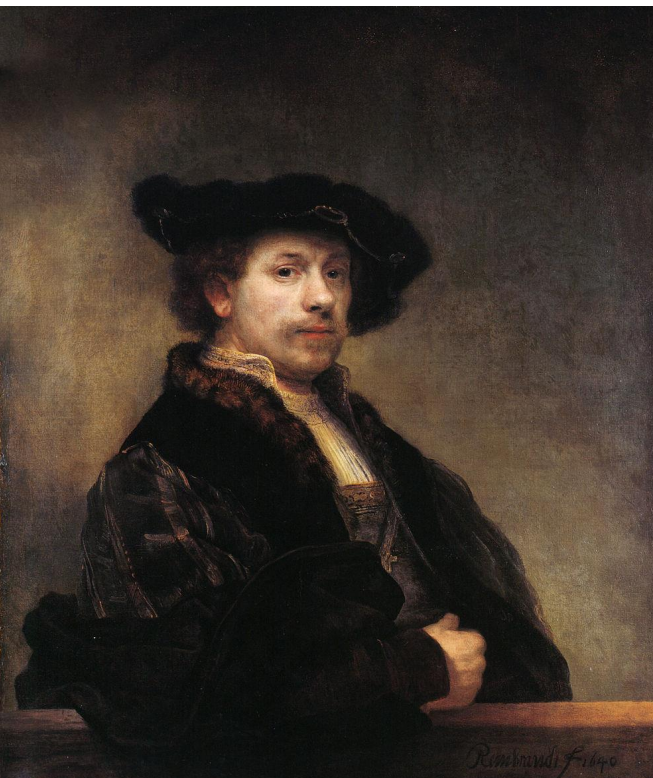
Rembrandt Self-Portrait at 34 1640
1. Like Dürer and Leyster before him, Rembrandt paints himself as “having arrived”, an artist of consequence. The clothes are expensive, but interestingly, they are the fashion of a previous era. 2. Reusing the authoritative pose in the tradition (like Dürer and Titian)
3. Skin, facial hair, hat, and cloth are done exceptionally well
4. Even as a young man, contrast between light and dark is strong already
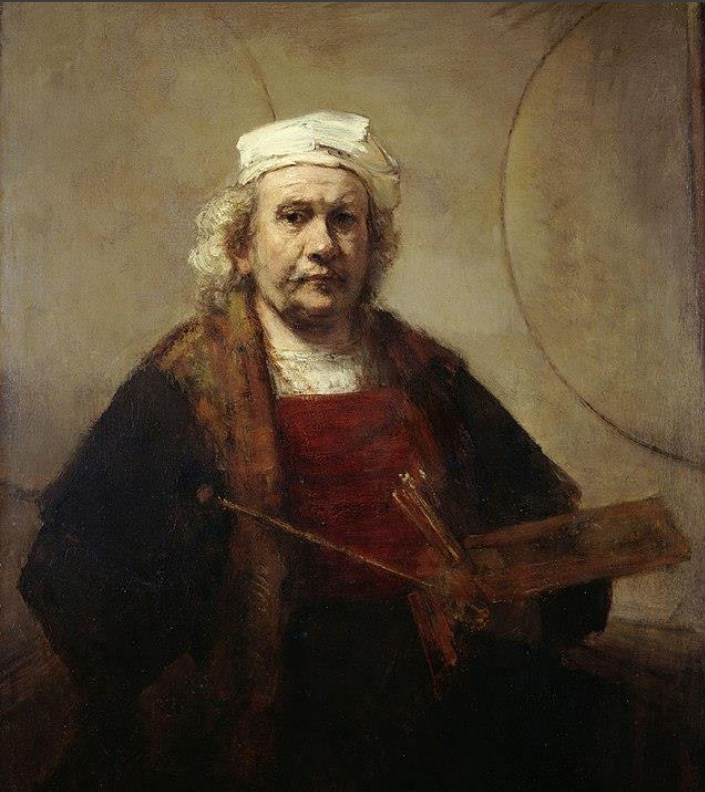
Rembrandt, Self-Portrait, c. 1665
Aging Rembrandt allegorical explores mortality and his having gone out of fashion as a painter. Dürer stopped the painted self-portraits when he was “rich and famous”, Rembrandt wants to tell the whole story
1. Direct gaze holding brushes and maulstick
2. Eyes still bright but sad (is he looking more strongly in the mirror now?), skin sags under the effects of gravity
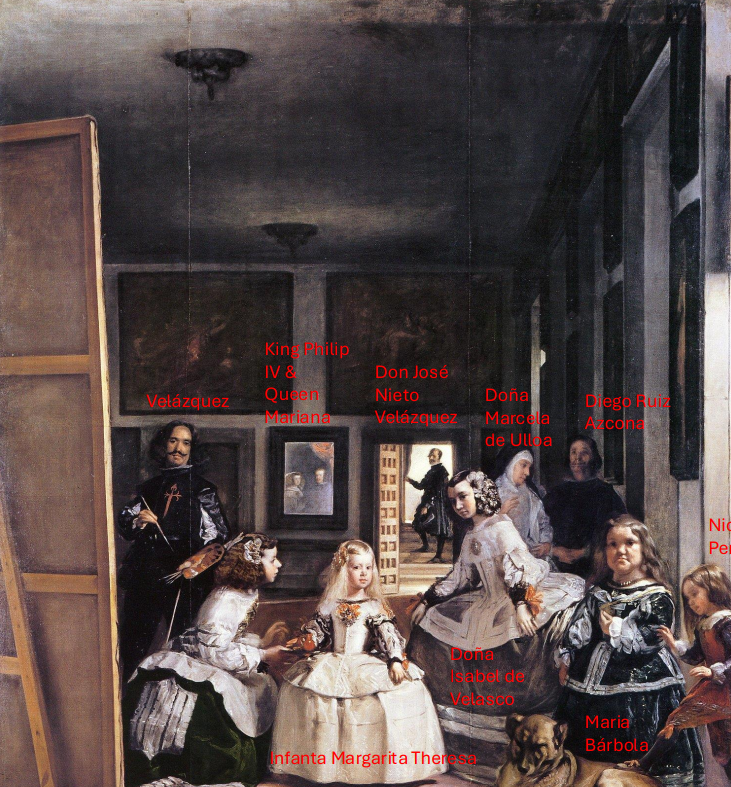
Diego Velazquez, Las Meninas–The Ladies in Waiting (1656)
1.) ambitious scale usually associated with historical/religious themes
2.) daring self portrait alongside royals (and larger than them too) elevates the artist
5.) unusual that servants are also central to the piece
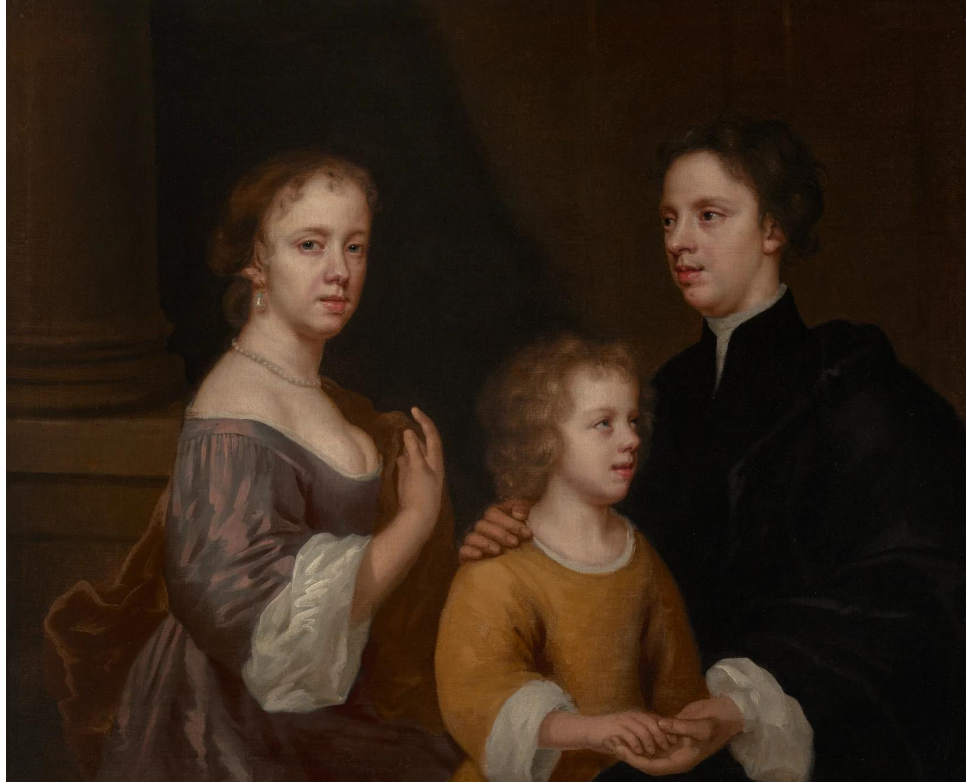
Mary Beale, Self Portrait with her Husband Charles and Son Bartholomew c. 1663-64
1. Early Self Portrait Representing a Working Mother
2. Self Portrait within Family
3. Confident and Strong View of Women
4. Baroque theatricality of pose and drapery
5. Use of self portrait to practice technique and composition as well as to advertise her skill
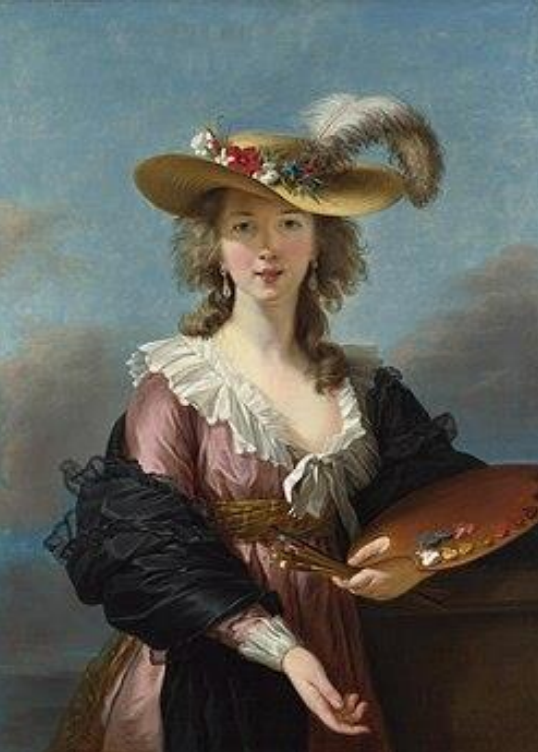
Elisabeth Louise Vigée Le Brun Self -Portrait with a Straw Hat, after 1782
Able to establish herself as an important artist by doing portraits of the sitter’s “best self” – focused on the graceful and beautiful aspects of the sitter.
Working at the height of the age of Romanticism, Vigée Le Brun’s relaxed and personable style (both in person and in her paintings) cemented her place among the top painters of the era.
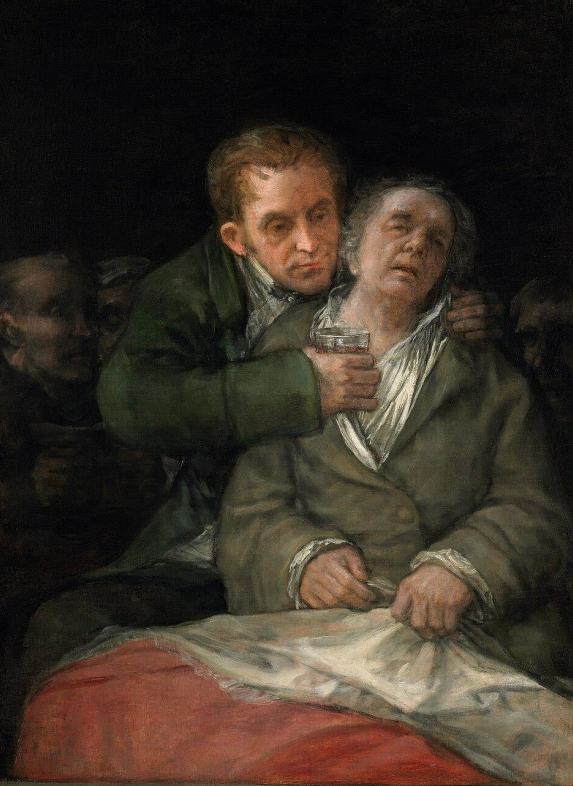
Francisco Goya
Self-Portrait with Dr. Arrieta, 1820
1. Double portrait leads to two sets of hand positions—Goya’s hand pulling at the bed covers suggest working a paintbrush and/or maulstick as well as an attempt to comfort himself while in pain.
2. The positions of both heads are unique among self-portraits. No direct gaze. Dr Arrieta’s gaze suggests concentration and/or distraction and Goya’s suggest pain or a state of exhaustion
3. Unidealized representation of self
4. Interest in darker psychological states, anxiety and unease. The eople lined up behind Goya parallel some ideas in his dark “black paintings” of this same period
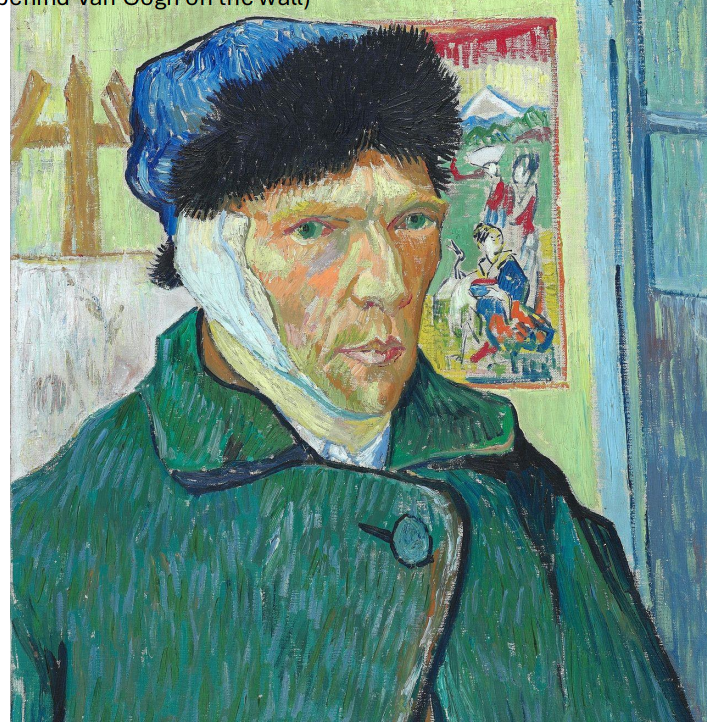
Self-portrait with Bandaged Ear, Easel, and Japanese Print 1889
1. Gaze moves from hot and intense to cold and detached in several self-portraits (suggesting some aspect of his emotional/mental state)
2. Expressive Color and Brushwork also suggest emotional/mental state
3. Be careful…difficult to say where emotional states end and self-fashioning begins and vice versa
4. Interest in Japanese Prints intrudes into the style and self concept in a number of selfportraits. Very like Rousseau’s “self othering”
5. Representation of the artist as an outsider
6. Use of self-portraiture as therapeutic
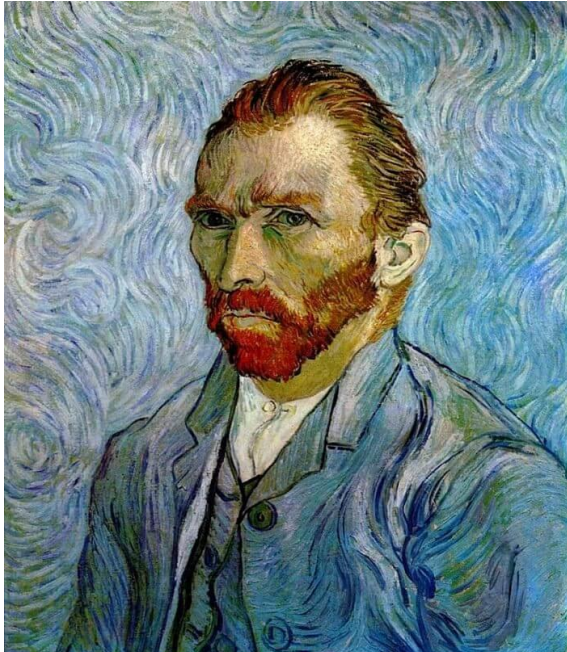
Self portrait with Blue Background (1889)
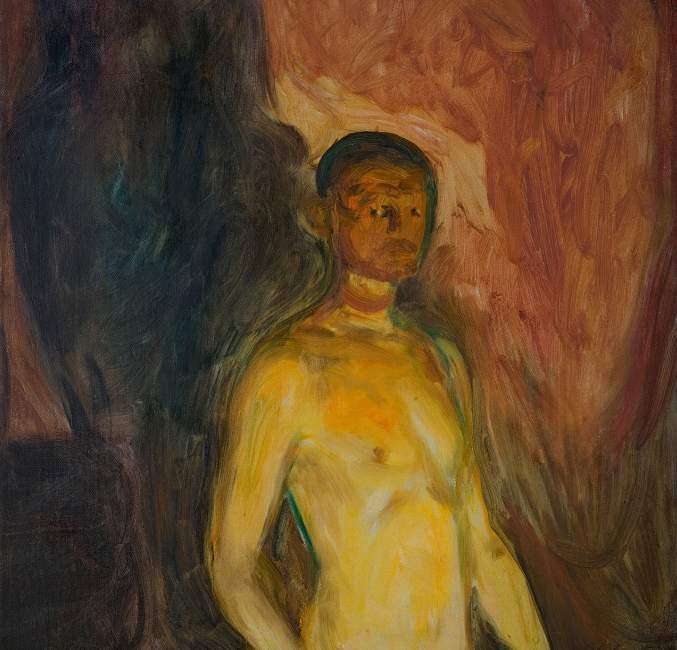
Edvard Munch
Self-portrait in Hell 1903
Prolific self-portraitist. He made over 100 self portraits in paint and other media during his life n Famous for his sense of trauma and anxiety, that has made him an important artist in today’s world n Dramatic backgrounds and looming shadows are a theme, as we see here
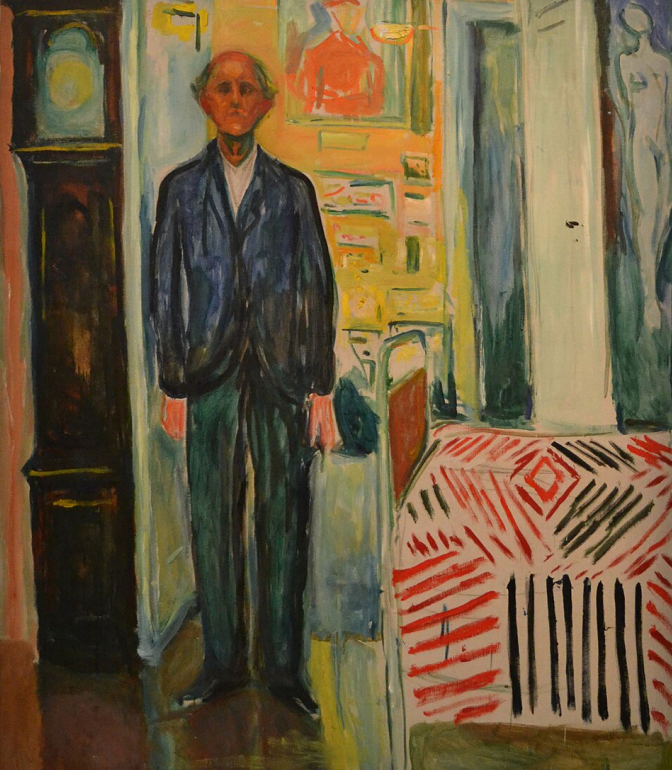
Edvard Munch. Between the Clock and the Bed (c. 1940-1943)
Grandfather clock and bed create an allegory of mortality here - The repetition of blues throughout suggests “the blues” - The French doors immediately behind Munch suggest that he is moving into a final stage and potentially leaving art behind
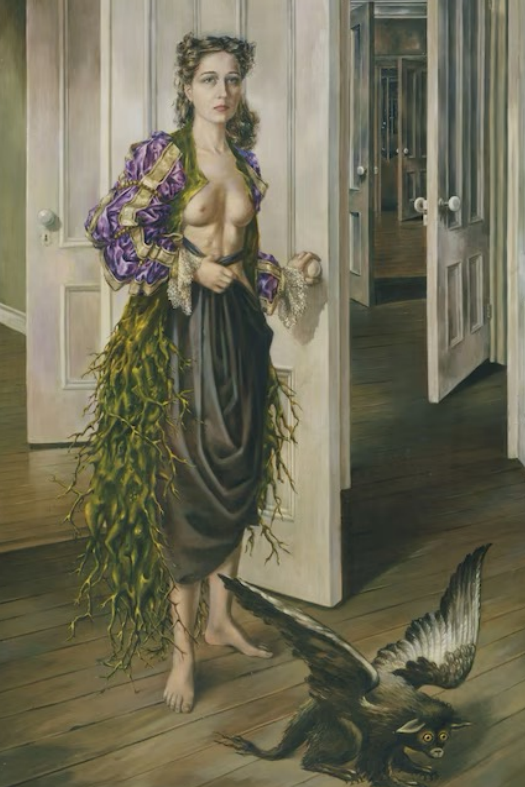
Dorothea Tanning
Birthday 1942
Explores her “Surrealist(ic) Self” that is simultaneously realistic and dreamlike (bordering on the subconscious)
--Gaze is uncannily neutral
--Assertive, empowered pose that takes female/feminist control over the tradition’s focus on the female nude
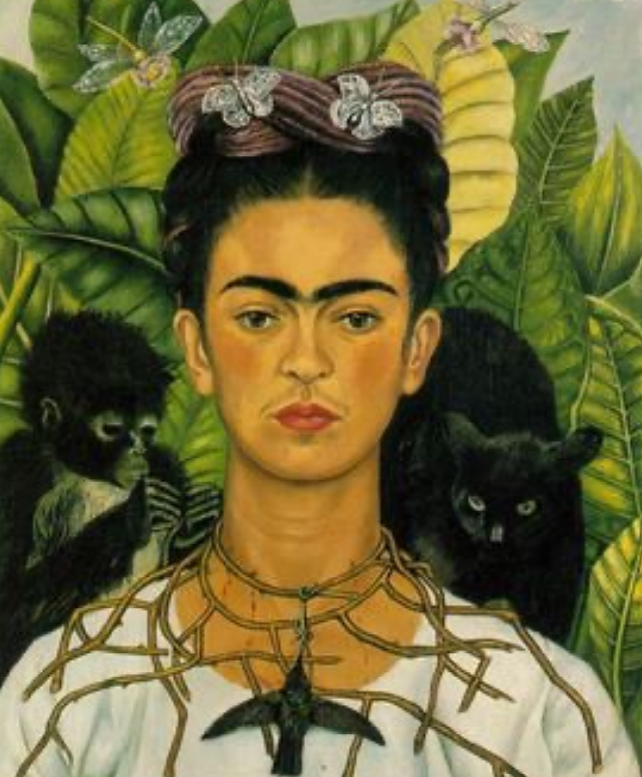
Frida Kahlo
Self-Portrait with Thorn Necklace and Humming Bird (1940)
Direct gaze despite pain and suffering
Kahlo’s embracing of folk dress (often from Oaxaca) points to her push to embrace a pre-Hispanic life and identity
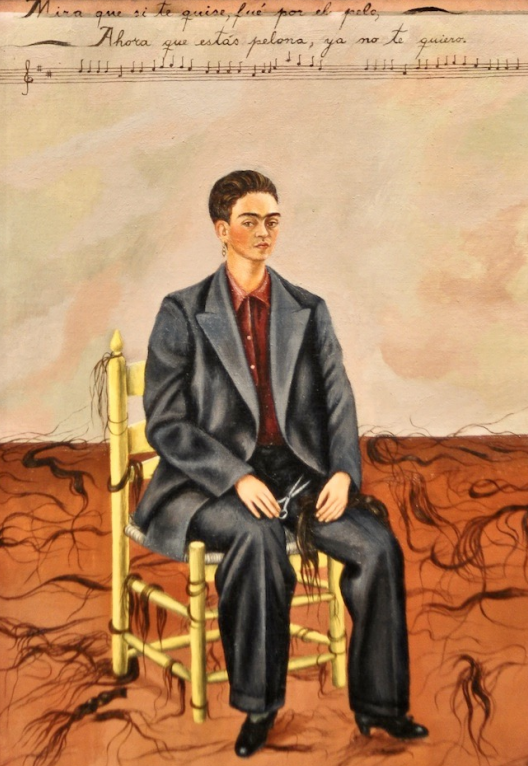
Self Portrait with Cropped Hair (1940)
“See, if I loved you, it was for your hair, now you are bald, I don’t love you anymore” -- Intentionally adopting the style of Mexican folk paintings
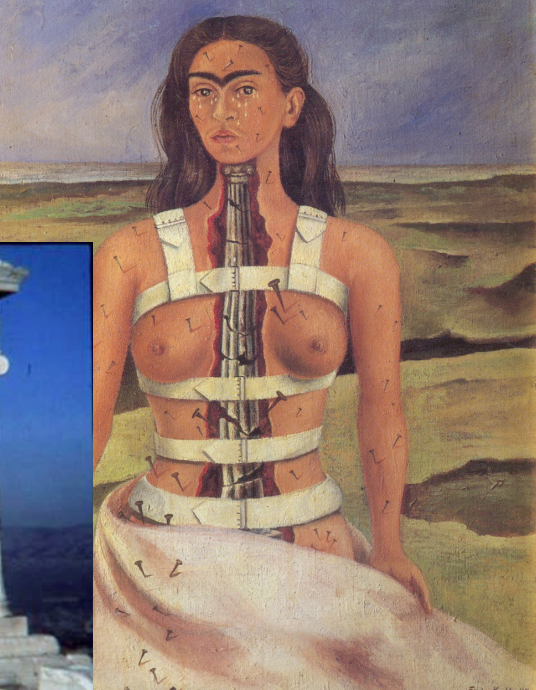
The Broken Column 1944
Frida got into a trolly accident that left her on the brink of death.
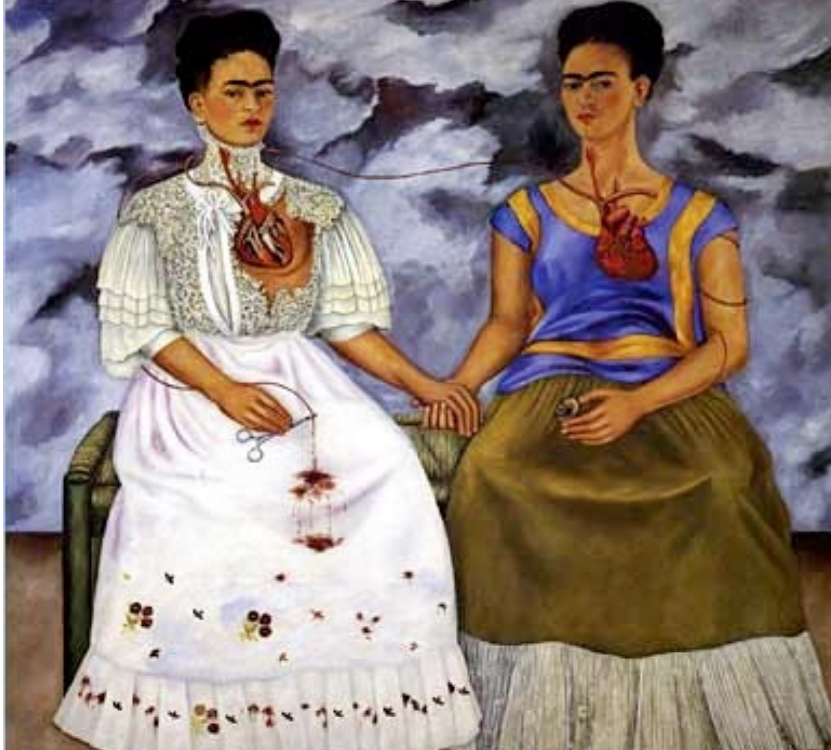
The 2 Fridas 1939
represents her dual identity and emotional pain, particularly after her divorce from Diego Rivera. The Frida on the right wears a traditional Tehuana dress, representing the indigenous Mexican Frida that Diego loved, with her heart intact and holding a portrait of him. The Frida on the left wears a European-style Victorian dress, symbolizing the Frida he rejected
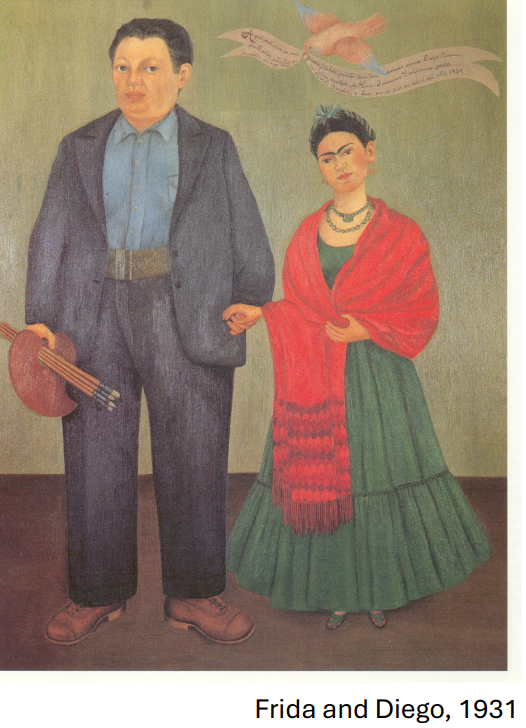
Frida and Diego, 1931
Similar to Arnolfini